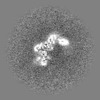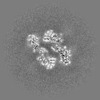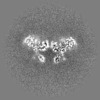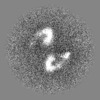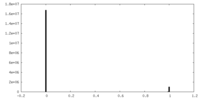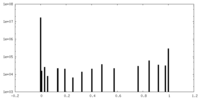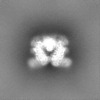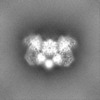登録情報 データベース : EMDB / ID : EMD-11488タイトル cryo-EM structure of human mTOR complex 2, overall refinement 複合体 : human mTOR complex 2タンパク質・ペプチド : Serine/threonine-protein kinase mTORタンパク質・ペプチド : Target of rapamycin complex subunit LST8タンパク質・ペプチド : Rapamycin-insensitive companion of mTORタンパク質・ペプチド : Target of rapamycin complex 2 subunit MAPKAP1リガンド : PHOSPHOTHIOPHOSPHORIC ACID-ADENYLATE ESTERリガンド : INOSITOL HEXAKISPHOSPHATEリガンド : ZINC IONリガンド : ACETYL GROUP / / / / 機能・相同性 分子機能 ドメイン・相同性 構成要素
/ / / / / / / / / / / / / / / / / / / / / / / / / / / / / / / / / / / / / / / / / / / / / / / / / / / / / / / / / / / / / / / / / / / / / / / / / / / / / / / / / / / / / / / / / / / / / / / / / / / / / / / / / / / / / / / / / / / / / / / / / / / / / / / / / / / / / / / / / / / / / / / / / / / / / / / / / / / / / / / / / / / / / / / / / / / / / / / / / / / / / / / / 生物種 Homo sapiens (ヒト)手法 / / 解像度 : 3.2 Å Scaiola A / Mangia F 資金援助 Organization Grant number 国 Swiss National Science Foundation 179323 Swiss National Science Foundation 177084 Swiss National Science Foundation 138262
ジャーナル : Sci Adv / 年 : 2020タイトル : The 3.2-Å resolution structure of human mTORC2.著者 : Alain Scaiola / Francesca Mangia / Stefan Imseng / Daniel Boehringer / Karolin Berneiser / Mitsugu Shimobayashi / Edward Stuttfeld / Michael N Hall / Nenad Ban / Timm Maier / 要旨 : The protein kinase mammalian target of rapamycin (mTOR) is the central regulator of cell growth. Aberrant mTOR signaling is linked to cancer, diabetes, and neurological disorders. mTOR exerts its ... The protein kinase mammalian target of rapamycin (mTOR) is the central regulator of cell growth. Aberrant mTOR signaling is linked to cancer, diabetes, and neurological disorders. mTOR exerts its functions in two distinct multiprotein complexes, mTORC1 and mTORC2. Here, we report a 3.2-Å resolution cryo-EM reconstruction of mTORC2. It reveals entangled folds of the defining Rictor and the substrate-binding SIN1 subunits, identifies the carboxyl-terminal domain of Rictor as the source of the rapamycin insensitivity of mTORC2, and resolves mechanisms for mTORC2 regulation by complex destabilization. Two previously uncharacterized small-molecule binding sites are visualized, an inositol hexakisphosphate (InsP6) pocket in mTOR and an mTORC2-specific nucleotide binding site in Rictor, which also forms a zinc finger. Structural and biochemical analyses suggest that InsP6 and nucleotide binding do not control mTORC2 activity directly but rather have roles in folding or ternary interactions. These insights provide a firm basis for studying mTORC2 signaling and for developing mTORC2-specific inhibitors. 履歴 登録 2020年7月28日 - ヘッダ(付随情報) 公開 2020年11月18日 - マップ公開 2020年11月18日 - 更新 2025年4月9日 - 現状 2025年4月9日 処理サイト : PDBe / 状態 : 公開
すべて表示 表示を減らす
 データを開く
データを開く 基本情報
基本情報 マップデータ
マップデータ 試料
試料 キーワード
キーワード 機能・相同性情報
機能・相同性情報 Homo sapiens (ヒト)
Homo sapiens (ヒト) データ登録者
データ登録者 スイス, 3件
スイス, 3件  引用
引用 ジャーナル: Sci Adv / 年: 2020
ジャーナル: Sci Adv / 年: 2020
 構造の表示
構造の表示 ムービービューア
ムービービューア SurfView
SurfView Molmil
Molmil Jmol/JSmol
Jmol/JSmol ダウンロードとリンク
ダウンロードとリンク emd_11488.map.gz
emd_11488.map.gz EMDBマップデータ形式
EMDBマップデータ形式 emd-11488-v30.xml
emd-11488-v30.xml emd-11488.xml
emd-11488.xml EMDBヘッダ
EMDBヘッダ emd_11488.png
emd_11488.png emd_11488_msk_1.map
emd_11488_msk_1.map emd_11488_msk_2.map
emd_11488_msk_2.map マスクマップ
マスクマップ emd-11488.cif.gz
emd-11488.cif.gz emd_11488_half_map_1.map.gz
emd_11488_half_map_1.map.gz emd_11488_half_map_2.map.gz
emd_11488_half_map_2.map.gz http://ftp.pdbj.org/pub/emdb/structures/EMD-11488
http://ftp.pdbj.org/pub/emdb/structures/EMD-11488 ftp://ftp.pdbj.org/pub/emdb/structures/EMD-11488
ftp://ftp.pdbj.org/pub/emdb/structures/EMD-11488 emd_11488_validation.pdf.gz
emd_11488_validation.pdf.gz EMDB検証レポート
EMDB検証レポート emd_11488_full_validation.pdf.gz
emd_11488_full_validation.pdf.gz emd_11488_validation.xml.gz
emd_11488_validation.xml.gz emd_11488_validation.cif.gz
emd_11488_validation.cif.gz https://ftp.pdbj.org/pub/emdb/validation_reports/EMD-11488
https://ftp.pdbj.org/pub/emdb/validation_reports/EMD-11488 ftp://ftp.pdbj.org/pub/emdb/validation_reports/EMD-11488
ftp://ftp.pdbj.org/pub/emdb/validation_reports/EMD-11488 リンク
リンク EMDB (EBI/PDBe) /
EMDB (EBI/PDBe) /  EMDataResource
EMDataResource マップ
マップ ダウンロード / ファイル: emd_11488.map.gz / 形式: CCP4 / 大きさ: 125 MB / タイプ: IMAGE STORED AS FLOATING POINT NUMBER (4 BYTES)
ダウンロード / ファイル: emd_11488.map.gz / 形式: CCP4 / 大きさ: 125 MB / タイプ: IMAGE STORED AS FLOATING POINT NUMBER (4 BYTES) emd_11488_msk_1.map
emd_11488_msk_1.map emd_11488_msk_2.map
emd_11488_msk_2.map 試料の構成要素
試料の構成要素 Homo sapiens (ヒト)
Homo sapiens (ヒト) Homo sapiens (ヒト)
Homo sapiens (ヒト)
 Homo sapiens (ヒト)
Homo sapiens (ヒト)
 Homo sapiens (ヒト)
Homo sapiens (ヒト)
 Homo sapiens (ヒト)
Homo sapiens (ヒト)
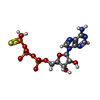
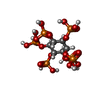

 解析
解析 試料調製
試料調製 電子顕微鏡法
電子顕微鏡法 FIELD EMISSION GUN
FIELD EMISSION GUN
 画像解析
画像解析 ムービー
ムービー コントローラー
コントローラー




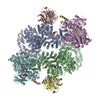
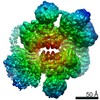




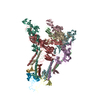




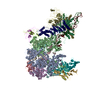

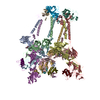
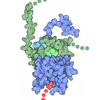
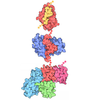
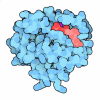
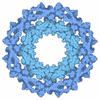
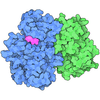

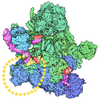

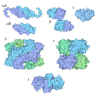
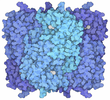
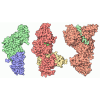
 Z (Sec.)
Z (Sec.) Y (Row.)
Y (Row.) X (Col.)
X (Col.)










